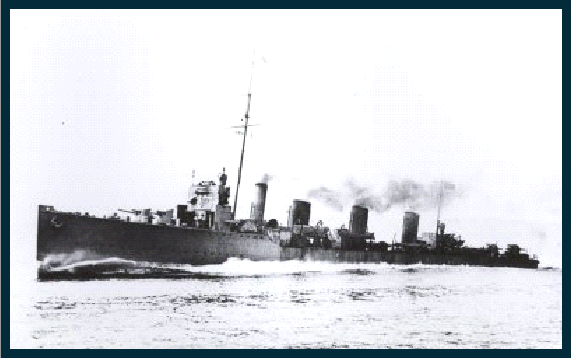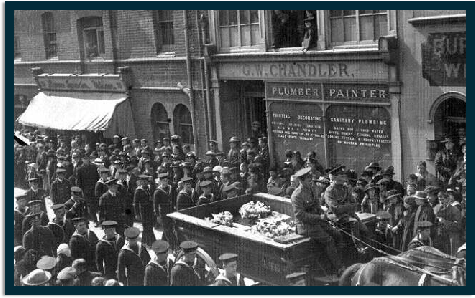Copyright © All rights reserved.



James Richardson
James Edward Richardson was born 6th January 1896 and his birth registered in Malton in the first quarter of 1896. He was the second son of James and Hannah and in 1901 they were living at 14 Town Street, Old Malton. Frank was working as a farm labourer and they had five children.
1901 census – resident at 14 Town Street, Malton (St Mary’s Parish)
RICHARDSON, Frank, Head, Married, M, 40, Ordinary Farm Labourer, Malton Yorkshire,
RICHARDSON, Hannah, Wife, Married, F, 34, , Snainton Yorkshire,
RICHARDSON, Robert, Son, , M, 11, , Malton Yorkshire,
RICHARDSON, Emily, Daughter, , F, 9, , Rillington Yorkshire,
RICHARDSON, James E, Son, , M, 5, , Malton Yorkshire,
RICHARDSON, Pollie, Daughter, , F, 3, , Malton Yorkshire,
RICHARDSON, Sarah J, Daughter, , F, 1, , Malton Yorkshire,
In 1911 the family were still at 14 Town Street, but by 1916 they had moved out to Coneysthorpe. Presumably James’ record does not show him as being in the navy but he does not appear on the census.
According to his navy record James joined the navy in December 1913 at HMS Vivid 1 the shore base at Devonport as a Boy 2nd Class. On reaching his eighteenth birthday he signed on to a 12-
He was promoted to Ordinary Seaman in June and was transferred to HMS Victory 1, the Portsmouth shore base in July, where he stayed until after the outbreak of war until December when he joined the crew of the newly commissioned HMS Broke, a Faulnor class destroyer, originally built for the Chilean Government but purchased by the Royal Navy on the outbreak of war. In September 1915 he was promoted to Able Seaman. In May 1916 she took part in the Battle of Jutland.
Broke formed part of the 4th destroyer flotilla. During the night of 31 May the flotilla was stationed behind (north) of the Grand Fleet to guard against German attack and was heading south keeping station with the fleet. At around 23.15, three ships approaching were reported to Captain Wintour, who being unable to determine whether the ships were British or German issued a British challenge signal to the approaching ships. This was immediately answered by a hail of fire at a range of around 600 yards from the approaching German light cruisers. The ships were the van of the German High Seas Fleet, which was passing behind the British fleet.
The leading British ships, Tipperary, HMS Spitfire, Sparrowhawk, HMS Garland, HMS Contest and Broke all fired torpedoes at the German ships before turning away from the fire. Confusion as to the identity of the opposing ships persisted despite the outbreak of gunfire, so that Broke's captain ordered no torpedoes to be fired until he could positively identify the ships as German. This he did when a searchlight from one of the German ships caught one of her companions for long enough for it to be identified. None of the destroyers further behind felt sufficiently confident to open fire. The German ships had turned away to avoid the torpedoes, and in the confusion Elbing was rammed by the battleship SMS Posen and sank around 03.40.. Tipperary was set on fire in the engagement and sank around 02.00 the following morning. Spitfire narrowly avoided being rammed by the battleship Nassau, ripping a hole in the side of the battleship as the two ships collided side to side, but then had to retire from the battle and limped home to England.
At around 23.40 large ships were again sighted. The German battleship SMS Westfalen sent a recognition signal and then turned on searchlights. Broke attempted to fire torpedoes, but the range was very short, in the region of 150 yards, and the German ship opened fire first. The effect was devastating so that within a couple of minutes 50 crew were killed and another 30 injured, disabling the guns and preventing any effective activity on deck. The helmsman was killed at the wheel, and as he died his body turned the wheel causing the ship to turn to port and ram Sparrowhawk. Both ships had already turned to port from line ahead to line abreast to fire torpedoes.
Sub Lieutenant Percy Wood saw Broke coming towards them at 28 knots, heading directly for Sparrowhawk's bridge and was knocked over by the impact. He awoke to find himself lying on the deck of Broke. Wood reported to Commander Allen, who told him to return to his own ship and make preparations there to take on board the crew of Broke. Two other men from Sparrowhawk were also thrown onto Broke by the collision. Returning to Sparrowhawk, Wood was told by his own captain, Lieutenant Commander Sydney Hopkins, that he had just sent exactly the same message across to Broke. Approximately 20 men from Sparrowhawk evacuated to Broke, while fifteen of Broke's crew crossed to Sparrowhawk.
At this point a third destroyer, HMS Contest steamed into Sparrowhawk, removing six feet from her stern. Contest was relatively unharmed and able to continue underway after the collision. Broke and Sparrowhawk remained wedged together for about half an hour before they could be separated and Broke got underway, taking 30 of Sparrowhawk's crew with her. Broke remained able to manoeuvre, although she had lost her bow. At around 1.30 AM the ship again encountered German destroyers which fired about six rounds into Broke, which managed to return one shot before the ships separated. The ship proceeded slowly towards Britain but by 0600 on 2 June found that she could no longer travel into the high seas with her damaged bow and had to turn back towards Heligoland. The seas abated and the ship was able to head for the Tyne, arriving some two and a half days after the engagement.
James was among those lost in the Wesfalen’s attack and his body was never identified. The photograph below shows the coffins of some of the dead from HMS Broke arriving in Dover.
James is commemorated on the Portsmouth Naval Memorial as well as in Old Malton Church and Memorial Hall.

